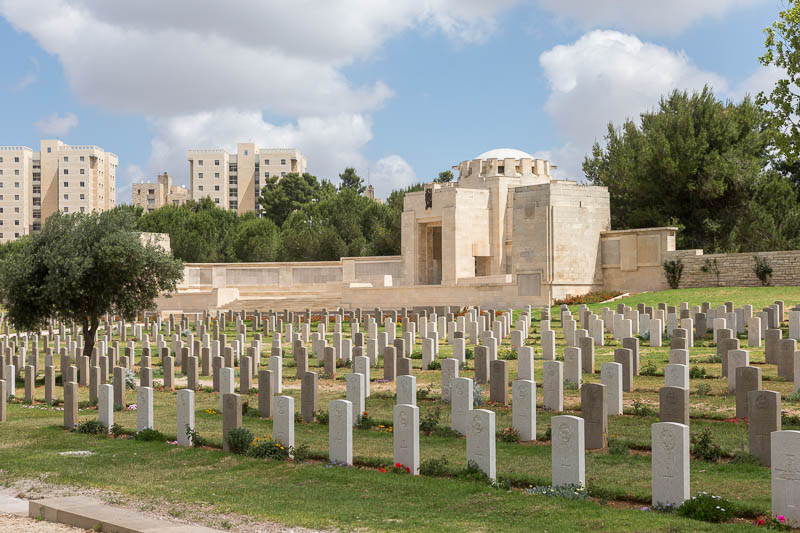The Jerusalem Memorial stands in Jerusalem War Cemetery, 4.5 kilometres north of the walled city and is situated on the neck of land at the north end of the Mount of Olives, to the west of Mount Scopus. The cemetery is found on Churchill Blvd, sandwiched between Hadassah Hospital and the Hyatt Hotel. An Australian Memorial is opposite the cemetery entrance.
At the outbreak of the First World War, Palestine (now Israel) was part of the Turkish Empire and it was not entered by Allied forces until December 1916. The advance to Jerusalem took a further year, but from 1914 to December 1917, about 250 Commonwealth prisoners of war were buried in the German and Anglo-German cemeteries of the city. By 21 November 1917, the Egyptian Expeditionary Force had gained a line about five kilometres west of Jerusalem, but the city was deliberately spared bombardment and direct attack. Very severe fighting followed, lasting until the evening of 8 December, when the 53rd (Welsh) Division on the south, and the 60th (London) and 74th (Yeomanry) Divisions on the west, had captured all the city's prepared defences. Turkish forces left Jerusalem throughout that night and in the morning of 9 December, the Mayor came to the Allied lines with the Turkish Governor's letter of surrender. Jerusalem was occupied that day and on 11 December, General Allenby formally entered the city, followed by representatives of France and Italy. Meanwhile, the 60th Division pushed across the road to Nablus, and the 53rd across the eastern road. From 26 to 30 December, severe fighting took place to the north and east of the city but it remained in Allied hands. JERUSALEM WAR CEMETERY was begun after the occupation of the city, with 270 burials. It was later enlarged to take graves from the battlefields and smaller cemeteries in the neighbourhood. There are now 2,514 Commonwealth burials of the First World War in the cemetery, 100 of them unidentified. Within the cemetery stands the JERUSALEM MEMORIAL, commemorating 3,300 Commonwealth servicemen who died during the First World War in operations in Egypt or Palestine and who have no known grave. The memorial was designed by Sir John Burnet, with sculpture by Gilbert Bayes. In addition, the mosaic in the Memorial Chapel was designed by Robert Anning Bell. The Memorial was unveiled by Lord Allenby and Sir James Parr on 7 May 1927.


Add new comment